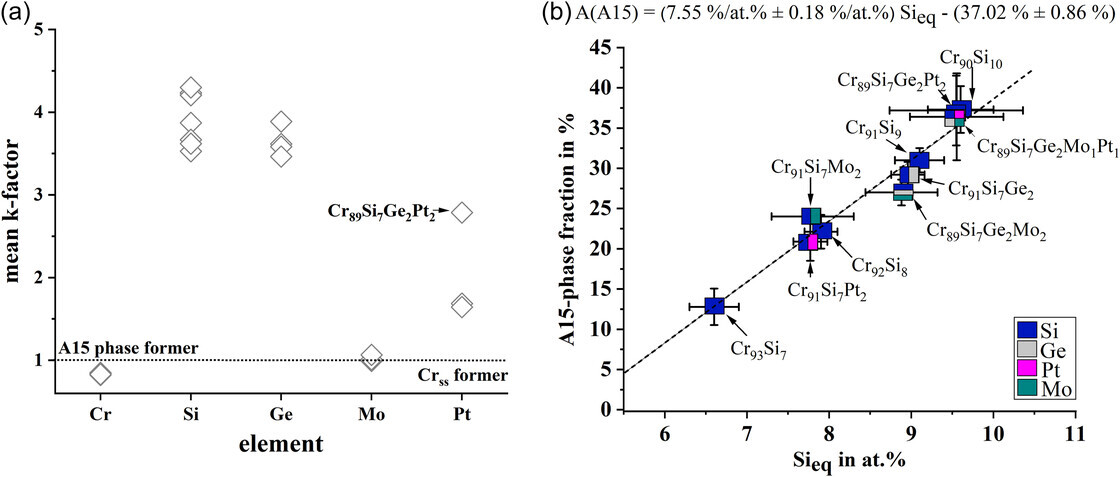A.S. Ulrich, P. Pfizenmaier, M. Kerbstadt, L. Pelchen, A. Solimani, U. Glatzel, M.C. Galetz
Advanced Engineering Materials 2401818 (2025), DOI: 10.1002/adem.202401818

Cr solid solution (Crss) alloys strengthened by A15-phase precipitates (e.g., Cr3Si) are promising candidates for high-temperature structural materials. A series of Cr-base alloys (Cr ≥ 89 at%) with strengthening A15-phase precipitates consisting of up to five alloying elements is investigated. Scanning electron microscopy with energy-dispersive X-ray spectroscopy, electron probe microanalysis with wavelength-dispersive X-Ray spectroscopy, X-ray diffraction, image analysis, and nano- and microindentation are used to characterize the interplay of alloying elements on hardness, microstructural partitioning, and coarsening behavior when annealed for 400 h at 1050 °C, 100 h at 1200 °C, and 100 h at 1350 °C. The impact of the alloying elements on microstructure is found to be combinatory in the investigated composition space, independent of the compositional complexity of the alloy. Ge and especially Pt enhance microstructural coarsening, while Mo additions can counteract this. Ge and Pt mainly partition in the A15 phase, while Mo equally partitions in both phases. Partitioning of Pt depends on the overall alloy composition, which is the reason for enhanced precipitate coarsening. Considering the different partitioning behaviors of individual elements, a collective parameter (Si equivalent (Sieq)) is introduced in this work to formulate the impact of additional alloying elements on the microstructural evolution of such Cr-base alloys.